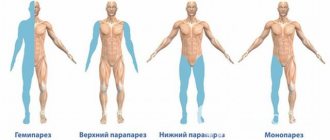Every second person experiences discomfort and deterioration in health from time to time. There is pain in the heart, which radiates to the left arm. Such symptoms can be short-lived or last for several days. Pain in the heart area worries the patient. It has different character, frequency and intensity. Most often, patients experience a sharp and nagging pain, which stops when changing position.
Why does my heart hurt and my hands go numb? Are these symptoms related to the cardiovascular system? Which doctors should you visit? To establish an accurate diagnosis and begin treatment, it is advisable to consult a specialist as soon as possible and undergo a comprehensive diagnosis of the body. To prevent the development of the disease, contact the medical staff of the KDS Clinic. Each patient will be referred for tests, undergo a full examination and be assigned effective treatment. The disease will be detected even at an early stage.
Pain in the heart radiates to the arm not only with problems with the cardiovascular system. Such symptoms may indicate dysfunction of the nervous system, musculoskeletal system, and gastrointestinal tract. In some cases, we are talking about hormonal changes in the body.
Numbness in left leg
A feeling of numbness in the left leg in the absence of other symptoms is a dangerous sign, a possible prerequisite for a stroke or ischemic attack.
Numbness of the fingers, one or more, indicates neuropathy of the tibial and peroneal nerves, the presence of an intervertebral hernia. When dislocated in the area of the fifth vertebra, the hernia can, in addition to numbness, cause tingling, cottoniness and mild pain along the outer part of the lower leg. If the symptoms are supplemented by redness, swelling, or limited mobility of the limb, a cardiological or rheumatological examination is necessary. The femoral part of the left leg goes numb due to degenerative-dystrophic processes associated with pinched nerve fibers. Numbness in the lower leg indicates damage to the spine, especially if it worsens with physical activity.
Heart hurts, left hand goes numb, reasons
Pain in the left arm and heart appears when the functioning of one of the systems in the body is disrupted. Numbness of the limbs on the left is a clear sign of the development of the disease. Experts identify a lot of reasons that influence the deterioration of well-being. They are divided into cardiac and non-cardiac causes. Among them:
Cardiac causes of heart pain and numbness in limbs
- Cardiac ischemia. With coronary heart disease, the patient feels a sharp dagger pain in the heart area, which radiates to the left arm. In such situations, you cannot do without painkillers and without the help of doctors. We are talking about damage to the heart muscle. Stress, emotional stress, and chronic lack of sleep lead to the development of cardiovascular disease. Also, coronary heart disease occurs in people who work physically. The patient's heart and arm hurt. In advanced cases, deterioration in health is accompanied by dizziness and a pulling sensation in the left shoulder area. The person is in a state of panic and breaks into a cold sweat. The nervous system is overloaded and therefore cannot function normally. If ignored, these symptoms lead to myocardial infarction and angina. An attack of angina lasts about ten minutes. It is recommended to use nitroglycerin and vasodilators. Do not self-medicate. The KDS Clinic will prescribe the necessary treatment and stop the progression of the disease.
- Myocardial infarction. The heart hurts and radiates to the arm when myocardial infarction develops. The disease is extremely dangerous to human life and will lead to death. There is a strong sharp pain in the heart, the hand goes numb. In some cases, the face also becomes numb. The patient feels a panicky fear of death and is shaking. If symptoms worsen within an hour and do not stop after taking medication, then the patient is guaranteed to have a heart attack. It's worth calling an ambulance. Sometimes a myocardial infarction goes away without any symptoms.
- Myocarditis. Heart and arm pain due to myocarditis. This pathology indicates serious disorders of the cardiovascular system. The disease is not easy to diagnose. Symptoms include shortness of breath, tinnitus, constant fatigue, insomnia, a feeling of anxiety and fear for your life, dizziness, and cold sweats. The patient is concerned about tachycardia and blood pressure disorders. Severe pain appears in the chest and heart. Hands and feet become numb. The development of myocarditis is not associated with physical activity.
- Congenital heart defect.
- Cardiomyopathy.
- Vegetovascular dystonia.
- Pericarditis.
- Consequences of nervous breakdowns and stress.
Numbness of the leg below the knee
This part of the limb is extremely vulnerable to disorders of the blood vessels and nerve roots. A passive lifestyle and sedentary work can cause pathology. Vascular problems additionally give a burning sensation, loss of sensitivity, cold feet, tingling of the numb area.
Numbness of the right leg is one of the most important signals of sciatic nerve neuropathy, the cause of which is a hernial formation. The symptom intensifies when walking or sitting, and is often accompanied by convulsions.
The same pathologies on the left leg indicate left-sided protrusion of the intervertebral disc. Accompanied by piercing, unexpected pain.
The most common causes of numbness in body parts
Some people don't attach any importance to this. Others find it scary.
And in fact? In what cases are sensory disturbances—paresthesia (or “numbness”)—a cause for concern, and in what cases not? Let's try to figure it out.
The floor goes to our expert, angioneurologist, doctor of medical sciences, professor Evgeniy Shirokov , who, at our request, commented on the most common causes of numbness in various parts of the body.
Radicular syndromes (radiculitis, radiculopathy, associated either with inflammation, vascular disorders, or with mechanical compression of the nerve roots in the segments of the spine and spinal cord by intervertebral hernia) are the most common cause of paresthesia.
By the way
Many people consider phlebological problems (varicose veins, thrombosis, etc.) to be the source of numbness. Experts say: if this happens, it is only in advanced forms of vascular diseases, when long-term tissue swelling compresses and damages nerve trunks.
The nature of sensitivity disorders: damage to the roots in the cervical spine is usually symmetrical (on both the left and right sides). In this case, more often than not the entire limb goes numb, but, for example, only two fingers or part of the hand. Sometimes it is not only numbness, but also a burning sensation that intensifies at night. Lumbosacral radiculitis is characterized by pain on the side or back of the leg.
Should I be worried? Such paresthesias do not pose any threat to life. Which, however, does not mean that matters should be left to chance. If your limbs regularly go numb, and in addition to this you experience pain, you should contact a neurologist who will refer you for an X-ray and, if necessary, CT examination of the problem area.
If the diagnosis is confirmed, physical therapy, massage, reflexology and physiotherapy will come to the rescue. Thanks to these techniques, you can relieve both numbness and pain. In some cases, manual therapy and osteopathy can be effective.
Polyneuropathy. The most common of them is diabetic, when, as a result of metabolic disorders and due to long-term elevated levels of glucose in the blood, peripheral vessels and nerves are damaged.
Numbness of the leg on the outside
This pathology has a special medical name - paresthesia, and is of a tumor, infectious, neurodegenerative or autoimmune nature. Accompanied by tingling, burning, and pain of varying intensity.
The sensations can be short-lived or long-lasting, of a paroxysmal nature. The most dangerous are long-term sensory disturbances, the cause of which is the course of chronic pathologies: arthritis, osteochondrosis, diabetes and others. Violations of cellular metabolism lead to persistent disruption of nerve impulse conduction.
Complications and consequences of numbness in the legs
The consequences of numbness in the legs are very diverse, leading to a wide range of complications. They depend on the cause that led to the malaise. The main thing that the patient needs to understand is that the presence of frequent numbness is not the norm, this is a very dangerous symptom that requires immediate consultation with a doctor. Timely examination will help protect against serious consequences.
Complications preceded by numbness of the legs:
- loss of tissue sensitivity, partial or complete;
- loss of limb mobility;
- dysfunction of the pelvic organs;
- leg deformity;
- gangrene;
- necrotization of intervertebral hernia.
Non-cardiac causes of heart pain and numbness in limbs
Most often, the patient’s left arm and heart hurt, in the case of a disease not of the heart, but of neighboring organs. We are talking about pathologies of the lungs, kidneys, and musculoskeletal system. Among them:
- Osteochondrosis. With the development of osteochondrosis, the load also goes on the cardiac system. In addition to unpleasant sensations in the spine, there is severe pain in the heart and numbness in the limbs. Requires special attention from medical professionals to prevent the development of the disease.
- Consequences of injuries. After injuries, disturbances occur throughout the body.
- Duodenal ulcer. With a duodenal ulcer, the limbs often become numb. You should consult a doctor as soon as possible.
- Pancreatitis. Associated symptoms include nausea, vomiting, dizziness, pale face, and fever.
- Gastrointestinal tract disorders. With gastrointestinal disorders, the patient feels unbearable pain not only in the stomach, but also in the heart. A lot of stress is placed on the heart.
- Neuralgia.
- Hormonal disorders. Most often the heart hurts and radiates to the arm in women. In some cases, symptoms are associated with hormonal imbalances.
- Pregnancy. During pregnancy, the functionality of a woman’s body completely changes. The load occurs on all organs, especially the heart. As a result, the pregnant woman feels unwell and has numbness in her limbs.
- Pathologies of the mammary glands.
- Benign and malignant tumors.
- Tuberculosis.
- Bronchial asthma.
- Dry pleurisy.
Diagnostics
The initial doctor’s appointment will consist of listening to the patient’s complaints and conducting an examination, on the basis of which the specialist will plan further diagnostic measures. To make a reliable diagnosis and begin treatment, you need:
- laboratory tests that determine a general, biochemical blood test with calculation of glucose levels, lipoproteins, triglycerides and cholesterol. If arthritis is suspected, a urine test is necessary;
- radiography is an accessible study that excludes injuries, inflammation, the formation of tumors, and bone growths;
- CT, MRI. Highly informative techniques that provide a complete picture of the size, location and nature of the pathology;
- electrophysiological diagnostic procedures that clarify the characteristics of nerve damage;
- Ultrasound, sonography, duplex scanning. Studies shown in the study of arterial lesions, varicose veins. An assessment of blood flow and its character is given. The sizes of the vessels are measured.
Treatment of pathology
Based on the diagnostics performed, the cause of the numbness is identified. The specialist leading the treatment will draw up a course of therapy using medicinal or non-medicinal methods. The full course may include:
- Taking medications. NSAIDs and steroids effectively eliminate numbness. Complex drug therapy uses painkillers, chondroprotectors, muscle relaxants, vitamin-mineral complexes, drugs that activate blood circulation;
- Ointments, gels, creams. The affected area is rubbed with elements of massage, and then medicinal compositions are applied. The products are used once, less often twice a day;
- Diet. The diet is enriched with foods containing B vitamins.
- Physiotherapy. Methods are used that activate blood circulation, metabolic and regenerative processes in tissues. Currents, magnetic therapy, ultrasound and low-intensity laser radiation are widely used.
- Traditional methods. Used only with the permission of the attending physician. Wraps with honey and camphor alcohol, rubbing, baths based on medicinal decoctions are shown;
- Exercise therapy. A set of exercises is selected individually by a physiotherapy specialist, taking into account concomitant diseases, age and current condition of the patient. Classes must be carried out daily, preferably 2 times for 40-50 minutes;
- Surgical intervention. Manipulations are performed according to the identified diagnosis. Traumatic injuries, neuropathy, damage to the nervous system, and vascular anomalies are promptly corrected.










